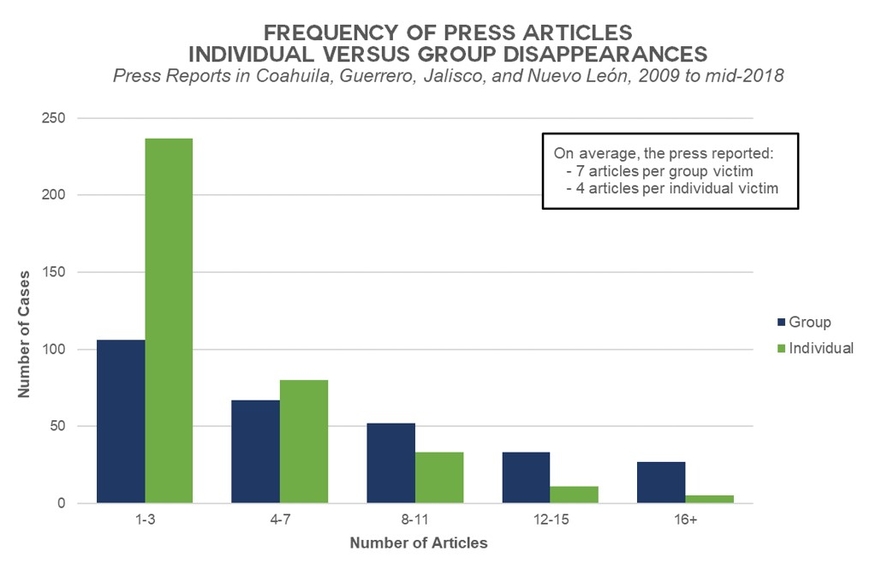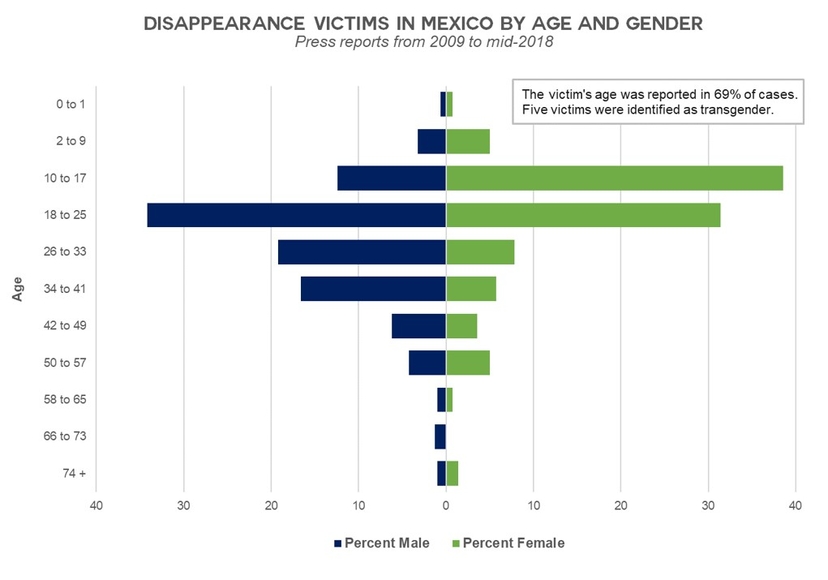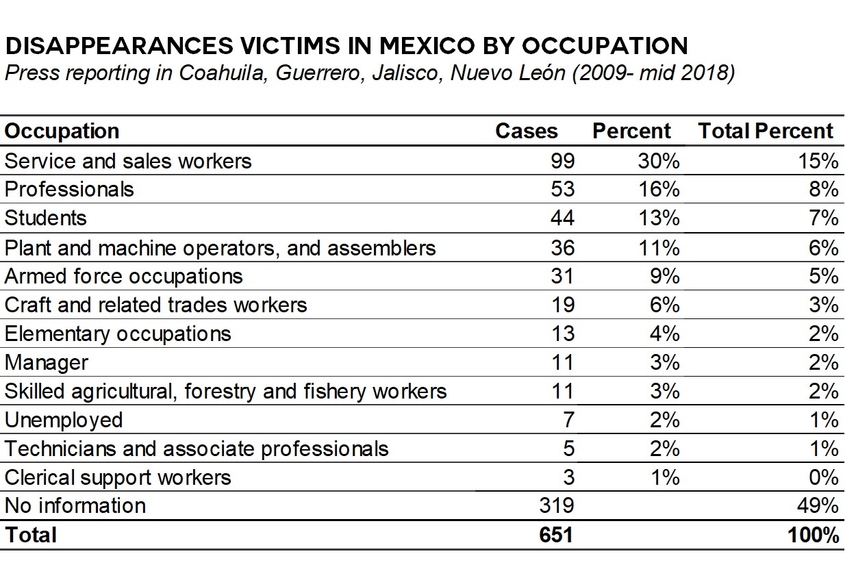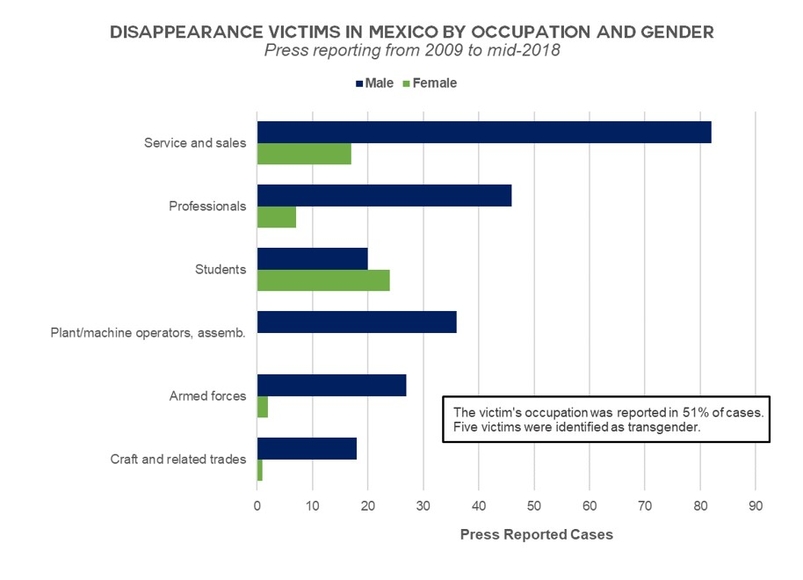What Was Reported About the Victim?
Of cases in the database, 56% of victims disappeared alone and 44% disappeared in a group. The database reveals that group disappearances tended to receive more press coverage than individual victims (see fig. 3). We found that the press reported an average of seven articles for each group disappearance and four articles for each individual disappearance. Group cases received 8+ articles with higher frequency than individual cases.

Nearly three-quarters (74%) of reported victims were male, a quarter (25%) were female, and five victims were identified as transgender. When age was reported, press coverage confirmed the youth of the victims: 20% of victims were between 10 to 17 years old, and 33% were between 18 and 25. Female victims tended to be younger than male victims; the highest percentage of female victims was 10 to 17 years old, while the highest percentage of male victims was 18 to 25 (see fig. 4). Victim age and gender demographic trends were consistent across all four states.

Nearly a third (30%) of victims were service or sales workers, followed closely by professionals, and students (see fig. 5). There were distinct trends in the victim’s occupation based on gender; notably, more female than male victims were reported as students (see fig. 6). This distinction aligns with the press’ reporting on age distribution by gender; considering female victims were observed to be younger than male victims, it is unsurprising that a larger proportion of female victims were students.


Press reports across all four states included limited information on the victim’s demographic characteristics. Little can be discerned from the reporting about victims’ educational attainment level, nationality, ethnicity, and socioeconomic status.


